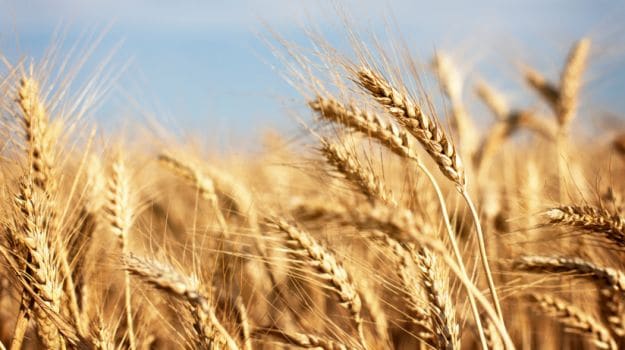Image via iStockWith the world's population expected to exceed 9 billion people by the year 2050, producing enough food for everyone is a top concern for global policymakers. And now, scientists have pointed out another threat to global food security. In a new study in Nature Communications, a group of researchers concluded that the world's grasslands are going to need a lot more phosphorus - an important nutrient for plants -- if they're going to produce enough grass to meet future food demands.
No, all that grass won't be used to feed humans. It's for the livestock, such as cattle, that people eat. Although many farmers increasingly supplement their animals' diets with corn and grain, grass remains a major food staple for livestock all around the world. So being able to feed all those animals depends, in a big way, on the productivity of the world's grasslands. The problem is whether those grasslands will be able to keep up with the future demand for meat, which is only expected to increase.
To help answer that question, the authors of the new paper decided to take a closer look at the phosphorus required by the world's grasslands. Phosphorus is just one of many nutrients that plants need to thrive, but it's the subject of increasing concern because of its global scarcity.
"We've really focused on phosphorus because it's a finite resource, and there was this notion -- and still is this notion -- that we need to be very careful with this resource because it's so important for our food production," said senior author Martin van Ittersum , a professor in the plant production systems group at Wageningen University in the Netherlands.
Phosphorus is naturally present in soil in a chemical form known as phosphate. It can cycle through a grassland system by being taken up by a plant, being eaten by an animal and then returning to the soil via that animal's manure (or through its decaying organic matter, when the animal dies). But because phosphate is found in relatively small amounts in most soils, it often acts as a kind of limiting factor for grasslands and other plant systems.
Adding phosphorus-containing fertilizer to the soil can boost a system's productivity -- but that kind of fertilizer is becoming less and less readily available. That's because such fertilizers require large amounts of phosphate rock, which must be mined from the earth. And there's only so much of it left on the planet.
Additionally, while there's demand for phosphate all over the world, the mines are concentrated in just a few regions, said Dana Cordell , research principal at the University of Technology Sydney's Institute for Sustainable Futures, who was not involved with the new study. So phosphate rock is not only a finite resource on the Earth, which we may eventually run out of -- it's also not equally accessible to all the people who need it. These factors make the study of phosphorus, especially in relation to global food systems, especially important.
To conduct their study, the researchers used data from the UN's Food and Agriculture Organization between 1970 and 2005 to inform a model that estimated historical phosphorus uptake by the world's grasslands and calculated how much extra phosphorus would be necessary to get grassland productivity up to the levels required to meet global food demands by the year 2050. They assumed a scenario in which grassland productivity must increase by 80 percent by 2050 to keep up with demand.
First, the researchers found that the world's grasslands had a negative phosphorus budget between 1970 and 2005, meaning more phosphorus was taken out of the grasslands than was added in. This likely happened thanks to a number of factors, the biggest of these being the loss of manure. In many farming systems, the livestock's manure is collected and taken away to be applied as fertilizer on cropland -- meaning whatever phosphorus it contains is taken with it, rather than being returned to the grass.
The researchers did note that the extent of the phosphorus losses differed by region. In parts of Europe, for instance, the grasslands actually had a positive phosphorus budget, meaning more phosphorus was added than taken away. But in many other parts of the world -- throughout Asia, Africa and Latin America, for example -- the opposite was true.
Overall, the models suggested a globally negative phosphorus budget for the world's grasslands. Between 1970 and 2005, about 125 million metric tons of phosphorus was poured into grasslands, while about 264 million metric tons were exported out, leaving a deficit of 139 million metric tons.
This presents a problem for global food security. Grassland production needs to ramp up to meet projected future demands for meat -- meaning it will need more phosphorus input, not less. In fact, the researchers' model indicated that the world's grasslands will need four times more phosphorus input to meet future demands by 2050. Overall, the researchers estimate that by 2050, about 24 million metric tons of phosphorus-based fertilizer will be required annually to maintain the necessary grassland productivity.
The issue to keep in mind moving forward is that phosphate rock remains a finite resource -- and even the amount that's still available isn't equally accessible to all, said Cordell, the University of Technology Sydney researcher. And she added that the more phosphate rock we mine, the lower its quality will be, the deeper we have to dig and the more energy we have to use to extract it.
So the study could also be seen as a reminder that more sustainable solutions to the phosphorus issue will likely be required in the not-so-distant future -- and such solutions will help safeguard not only the world's grasslands, but other systems that depend on phosphorus, such as croplands. One idea is to come up with more efficient ways of extracting and applying phosphate in the first place.
"We waste about 80 percent of the phosphate we use specifically for food production," Cordell pointed out. "It's getting lost at all stages, from mine to field to when we produce and consume food." Focusing on more efficient mining and fertilizer production could help minimize these losses.
It's also worth noting that there are important environmental consequences to wasted phosphorus as well. Each year, huge amounts of phosphorus from both agricultural and industrial settings end up running off into the environment and getting washed into rivers, lakes and other water systems. When this happens, the sudden surge of nutrients in the water can cause massive algal blooms, which can secrete toxins and deplete oxygen supplies in the water, leading to mass die-offs of fish and other organisms. So preventing phosphorus waste is not only good for food security -- it's good for the environment as well.
Better recycling of manure and other phosphorus sources would also be helpful, Cordell added. As van Ittersum pointed out, some parts of the world have achieved a net input of phosphorus into their grassland systems by supplementing their animals' diets with phosphorus-containing crops and then allowing the animals to return some of that phosphorus into the grasslands where they graze.
"Reusing the manure, keeping manure in the system, managing food losses, returning waste and residues to the field -- they all will help to better close the cycles and to avoid the need to use too much phosphate rock, which is a finite resource in the end," van Ittersum said.
Finally, Cordell noted that it will be important in the future to consider what types of diets might be most sustainable for the world's growing populations. Many experts have argued that the world's growing demand for meat will not be tenable forever, given the high carbon footprint and large land use required for meat production.
"It's certainly an issue that comes up with respect to climate change and water scarcity," Cordell said. Now, with our growing knowledge of the phosphorus requirements for certain food systems, we can begin "strategically looking at what foods have lower water and carbon footprints, but also have low phosphorus footprints as well," she said.
All of these considerations are important aspects of the study, which van Ittersum emphasized is "not just a plea to increase fertilizers -- it's first of all to raise awareness about our grasslands and [the need] to manage these better."(c) 2016, The Washington Post






